Search
Summary
Loading AI-generated summary based on World History Encyclopedia articles ...
Answers are generated by Perplexity AI drawing on articles from World History Encyclopedia. Please remember that artificial intelligence can make mistakes. For more detailed information, please read the source articles
Search Results

Image
Columns of Hagia Sophia
Columns of Hagia Sophia, 6th century CE, Hagia Sophia, Istanbul, Turkey. In Hagia Sophia, there are 140 monolithic columns which were brought from different places of the world.
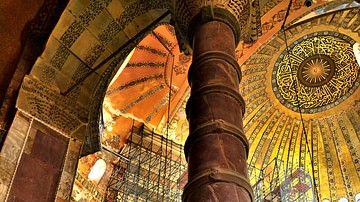
Image
Column of Hagia Sophia
A column of Hagia Sophia, 6th century CE, Hagia Sophia, Istanbul, Turkey. In Hagia Sophia, there are 140 monolithic columns which were brought from different places of the world. For instance; the 8 porphyry columns whose color of purple...
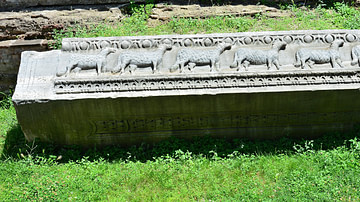
Image
Remnants of Theodosius' Hagia Sophia
Remnants of Theodosios' Hagia Sophia. A lamb relief representing 12 apostles. 5th. century CE, Hagia Sophia, Istanbul, Turkey. The first name of the Church was ‘’Megale Ekklesia’’ which means ‘’the Grand Church’’. The first Hagia Sophia...
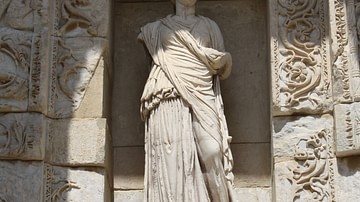
Image
Sophia-Wisdom, Celsus Library, Ephesos
A detail of the facade of the Celsus Library in Ephesos (c. 117 CE). The statue represents
wisdom (sophia), an attribute associated with the former proconsul Celsus to whom the building was dedicated.
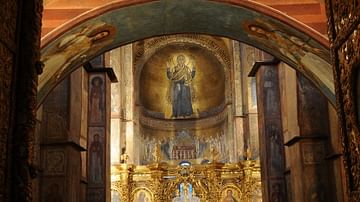
Image
Interior of Saint Sophia Cathedral, Kyiv
The interior and altar of Saint Sophia Cathedral of Kyiv.

Image
The Virgin and Child Mosaic, Hagia Sophia
The Virgin and Child mosaic, 9th century CE, Hagia Sophia, Istanbul, Turkey. The mosaic is located in the apse semi-dome of Hagia Sophia. In the mosaic Mary is enthroned and she puts her right hand on the shoulder of the Child Christ who...
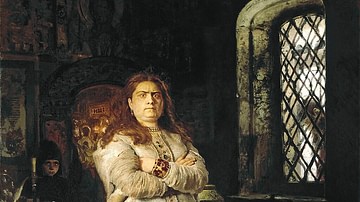
Image
Grand Duchess Sophia at the Novodevichy Convent
Grand Duchess Sophia at the Novodevichy Convent (1698), oil on canvas by Ilya Repin, 1879. The State Tretyakov Gallery, Moscow. Ilya Repin's 1879 painting portrays Sophia after her fall from power, confined to a cell in the...
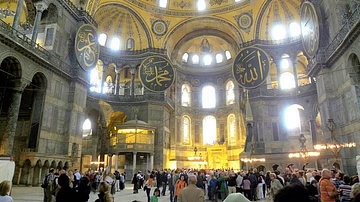
Image
Hagia Sophia, Istanbul
Hagia Sophia was built as a church by Isidore of Miletus and Anthemius of Tralles who were chosen as architects by the Byzantine Emperor Justinian. Hagia Sophia (meaning "holy wisdom") was completed in 537 BCE and was transformed into a mosque...
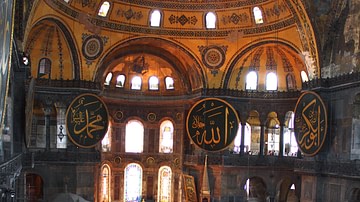
Image
Hagia Sophia Interior
The interior of the Hagia Sophia, Istanbul. It was built in 532-537 CE during the reign of Justinian I on the site of two more modest versions dating back to the 4th century CE.

Image
Calligraphic Names of Rashidun Caliphs in Hagia Sophia
Four medals showing beautifully designed names of the first four Rashidun Caliphs Abu Bakr (r. 632 - 634 CE), Umar (634 - 644 CE), Uthman (644 - 656 CE) and Ali (656 - 661 CE). In the Dome of the New Mosque, in the Hagia Sophia, Istanbul...